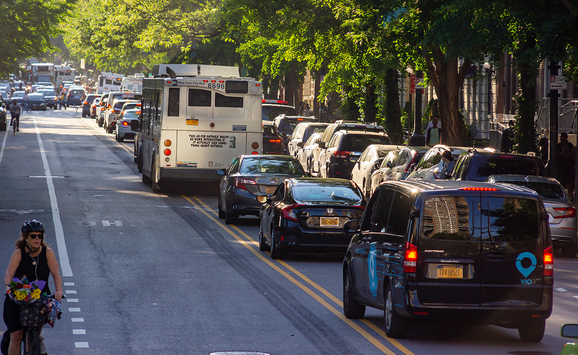As the climate warms, many weather-related disasters are predicted to increase in frequency or severity. Precipitation may be more intense and hurricanes more extreme. Wildfires may be stronger and storm surges higher. As scholars and policymakers alike explore how society can adapt to these changes, children are often overlooked, although they represent roughly half of those impacted by disasters.
Save the Children estimates that, due to climate change, up to 175 million children will be affected by disasters during the next decade. Disasters pose greater risks for children, who have different needs than adults, meriting specific interventions to help them cope with these events. In a new article in The Future of Children, I review what we know about the effects of sudden onset, weather-related disasters on children.
Children can be more vulnerable after a disaster for a number of reasons. Caregivers may be overwhelmed or unprepared. Very young children may not be able to communicate their needs. Children may need special food or supplies. They breathe more air per pound of body weight and have less fluid than adults, making them—babies in particular—more susceptible to dehydration. Children can be at sensitive points in their development, and may not process stress or trauma as well as adults. Those in developing countries are particularly vulnerable. Research in this area has focused almost exclusively on three impacts: physical health, mental health, and schooling.
Children may suffer myriad negative health impacts following a disaster that can last into adulthood when they are severe or occur at certain points in development. Disaster-related food shortages can lead to malnutrition or certain nutritional deficiencies. Destroyed health infrastructure can worsen disease and injury as well as prevent treatment for even non-disaster health problems. Disasters can also create periods of unhygienic conditions, which can lead to various illnesses. Stress and other negative impacts from disasters on pregnant mothers have been shown to lead to worse birth outcomes.
Alongside physical health impacts, disasters can also be stressful, frightening, and traumatic for children. In addition to the stress of simply experiencing a terrifying event, stress can occur from damage to a family’s possessions, the need to relocate temporarily or permanently, and from breakdowns in local networks, neighborhoods, or economies. If children lose family members, the grief can be profound. Caregivers may themselves have trouble processing the event, and witnessing this can further upset children or may make it harder on caregivers to address a child’s emotional needs. Many studies have found higher rates of PTSD symptoms in children after disasters. Rates tend to fall as time passes and children recover. Some children show much greater resilience to disasters but the research is inconclusive on what traits, contexts, or policy interventions can boost resiliency among those who suffer from a disaster.
Finally, disasters impact schooling. Schools themselves may be destroyed or children may be unable to attend due to necessary migration or negative health impacts. In developing countries, researchers have focused on another challenge: the post-disaster move of children into the labor market, since families require more income to cover their needs after such an event, either because they have lost assets or jobs or have added expenditures, and do not have insurance, savings, or other sources of funds.
What can we do to help protect children in the face of disaster? First, there is much to be done before a disaster even strikes. We can build safer schools, hospitals, and homes. Many groups are working on such efforts around the world. Children can be educated about disasters (with age-appropriate curricula) and empowered to reduce their families’ risk. And we can require that institutions working with children, such as daycares and schools, develop good disaster plans and practice them. Save the Children has found that in the United States, many states are falling short on even this simple intervention.
Many policies that are not designed for disasters nonetheless provide important protection for children after extreme events. Access to credit, subsidies for school enrollment, and social insurance policies all have been shown to help children. Considering the role these policies play in a disaster setting can help guarantee they are robust and effective in crisis situations.
Finally, there are many steps that should be immediately taken after a disaster. Children need to be reunited with their families as quickly as possible, and this requires well-designed and quickly executed identification programs. Family-friendly shelters need to be created for displaced children, with appropriate food, sleeping arrangements, and safety protocols. Necessary supplies for sanitization and clean water need to be provided immediately, and vaccination against diseases that may spread must be undertaken with urgency. Lastly, moving children back to pre-disaster routines as fast as possible can help bring a sense of normalcy and improve their emotional response.
We know what strategies and actions can help protect children after disasters. Prioritizing these policies and funding for them is the next critical step.





